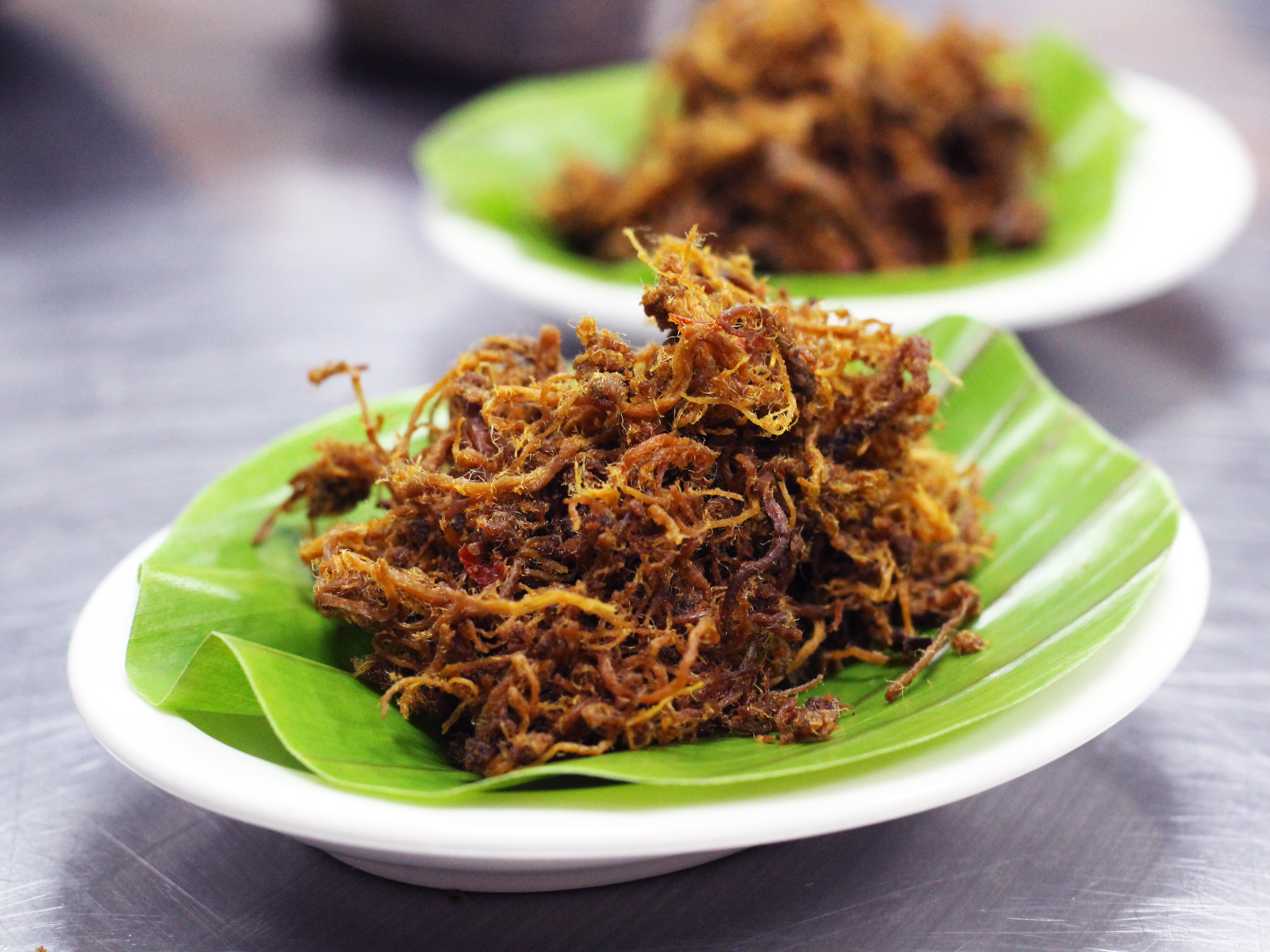Recipe Description
Chinese New Year dishes are often perceived to be time-consuming and require a joint effort from every family member. But when you discover a shortcut, it makes perfect sense to just prepare a complicated dish by eliminating a few difficult steps.
For anyone who has ever made woo tau kau yoke, a Hakka dish that involves frying seasoned pork belly in hot oil then steaming it for a few hours, that first step of preparing the pork can be substituted with store-bought roast pork. The seasoning for roast pork is essentially salt and five-spice powder, the exact same flavouring as the marinade for the fried pork. Plus, you escape the possible explosions of the meat frying in hot oil and splattering the entire kitchen.
Woo tau kau yoke translates literally as “taro interlocked with meat” or more crudely, “taro hooked on meat”. It basically means it’s a meatloaf where the taro and meat have melded together into one entity. So it also makes perfect sense to assemble this dish in a loaf pan so that when inverted, you can present the neat layers of taro and meat in a block.
Some people may even forgo frying the taro before assembling the loaf, but I find that this step helps to keep the taro intact when inverting onto the serving plate.
Another variant of the recipe is to steam the loaf with just meat and taro without the gravy. Only after the long braise that the steamed juices are poured into a wok to thicken with the gravy seasoning and drizzled back to dress the inverted loaf.
Whichever method you use, you can be sure that it will be packed with flavour and will become a showstopper at any Chinese New Year dinner. Presenting this dish at the table, your family will assume that you’ve spent hours preparing it. But take these shortcuts, and you can be sure that you’ll be hooked on preparing this dish all year round.
Recipe Ingredient
- 800g roast pork belly
- 700g taro
- Gravy dressing
- 1 knob ginger
- 4 cloves garlic
- 1 tbsp brown sugar
- 1 tsp five-spice powder
- 4 tbsp Shaoxing wine
- 1 tbsp dark soy sauce
- 2 cubes red fermented beancurd + 1 tbsp beancurd liquid
- 1 cup cold water
- 1 tsp cornstarch + 1/2 cup water
Instructions
- Skin the taro, cut into a 10 x 6 x 8-centimetre block, then into slices about 1-centimetre thick, using a loaf pan as your guide for the fit.
- Deep-fry the taro for about 1-2 minutes until the exterior is seared. Drain and set aside
- Cut the roast pork belly into the same size and thickness as the taro and set aside.
- Grease your loaf pan with cooking oil. Arrange the pork and yam in alternating layers into the loaf pan with the pork skin facing the bottom of the tin.
- Blend all the gravy ingredients into a fine paste. Pour in the gravy dressing to cover all the meat and the taro. Add cold water until it covers the meat and yam. Steamed at medium heat for one to one-and-a-half hours until the meat is tender and the taro is soft.
- Once the meat is ready, drain all the steam juices into a wok, bring to a boil and thicken with cornstarch slurry. Invert the meat and taro loaf carefully into a serving plate. Drizzle gravy over the loaf, garnish with chopped scallions and cilantro, and serve with steamed rice.










